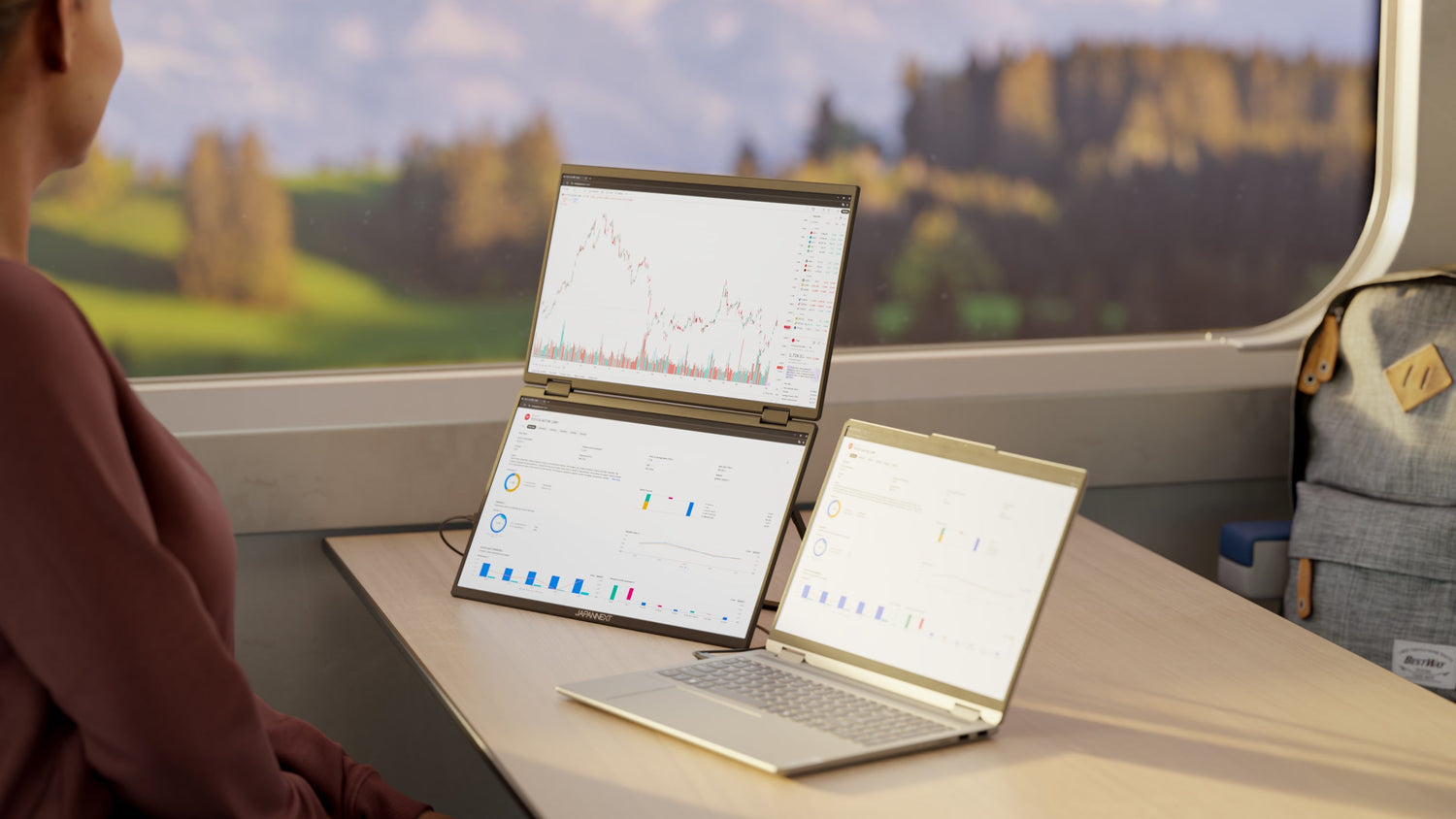The Switch 2 represents a major technological leap for Nintendo, with graphics capabilities requiring monitors to match. Modern gaming monitor types, particularly OLED and high-frequency technologies, are radically transforming the gaming experience. Understanding these technologies helps you select the optimal Switch 2 monitor to fully exploit the console's performance.
OLED Monitor Types Suitable for Switch 2 Performance
OLED technology for gaming monitors differs fundamentally from TV implementations. Gaming OLED panels incorporate specific optimizations: aggressive burn-in reduction via dynamic pixel shifting, enhanced thermal management for extended sessions, and gaming-centric color calibration. These technical adaptations ensure increased longevity compared to static video game interfaces.
OLED panel specifications for PC monitors include response times of less than 0.1ms, eliminating any perceptible motion blur. OLED's signature infinite contrast enhances Nintendo's aesthetic, with absolute blacks bringing out vibrant colors. Switch 2 OLED displays leverage this dynamic with tone mapping algorithms optimized for gaming content.
The technical advantages for Nintendo games are evident in the faithful reproduction of characteristic color palettes. The Switch 2's native OLED monitor already demonstrates these benefits. OLED monitors extend this quality to docked mode, with larger diagonals preserving pixel density. The technology eliminates the blooming of LCD monitors, which is crucial for games with high contrasts like Metroid or Zelda.
Switch 2 Resolution and 4K Monitors: Technical Analysis
Native 4K support for gaming monitors is achieved without intermediate conversion. Modern 4K monitors incorporate hardware scalers capable of processing the Switch 2 signal with minimal latency. This approach preserves texture sharpness while maintaining the responsiveness required for gaming. The Switch 2 variable resolution, which ranges between 1080p and 4K depending on the workload, benefits from this flexibility.
Intelligent upscaling surpasses simple linear interpolation. Gaming monitors use edge-adaptive algorithms that preserve the sharp edges of 2D sprites. This technique maintains the pixel-perfect aesthetic of retro games while enhancing modern 3D titles. The best Switch 2 monitor combines high native resolution and sophisticated upscaling to adapt to any content.
Optimal pixel density varies depending on usage. A 27-inch 4K monitor offers 163 PPI, ideal for desktop gaming. 32-inch 4K monitors maintain 137 PPI, enough to perceive all the details. This higher density than TVs allows you to appreciate the Switch 2's graphical improvements without having to stand back significantly.
Hz Switch 2: The importance of high refresh rates
The impact of 120Hz on fluidity transforms the gaming experience. Switch 2 FPS potentially reaching 120 frames per second requires a monitor able to display them in full. A 120Hz monitor refreshes the image every 8.33ms, compared to 16.67ms at 60Hz. This doubled frequency drastically reduces the perception of stuttering, particularly noticeable in racing or fast-action games.
Adaptive sync between console and monitor removes traditional visual glitches. Variable Hz Switch 2 dynamically adjusts based on scene complexity. VRR-compatible monitors track these variations in real time, maintaining perfect visual consistency. This technology outperforms traditional V-Sync by eliminating both tearing and stuttering without adding latency.
VRR technologies come in several implementations. HDMI 2.1 VRR, an open standard natively supported by the Switch 2, offers the broadest compatibility. AMD FreeSync and NVIDIA G-Sync Compatible also work over modern HDMI. The best displays combine these certifications, ensuring optimal synchronization regardless of the standard used.
Switch 2 FPS and response time: the essential criteria
The relationship between console FPS and monitor Hz determines perceived smoothness. The Switch 2's variable FPS requires some headroom on the display side. A 144Hz monitor comfortably accommodates 120fps spikes while handling temporary dips. This frequency headroom maintains a smooth experience even during complex scenes where the Switch 2's performance fluctuates.
The 1ms response time of modern gaming monitors eliminates motion artifacts. This metric measures the transition of pixels between states, directly related to sharpness in motion. Fast IPS displays now achieve 1ms GtG, rivaling TN panels while maintaining superior color quality. For the Switch 2, this responsiveness preserves readability during fast-paced actions.
Eliminating ghosting and motion blur requires a multifactorial approach. Beyond response time, Overdrive technologies optimize transitions without creating overshoot. Blur reduction modes like ULMB (Ultra Low Motion Blur) insert black frames between images. These techniques, adapted to the Switch 2 specifications, create sharpness comparable to older CRTs for retro gaming purists.
Switch 2 specifications and modern monitor connections
HDMI 2.1 is the preferred interface for leveraging the Switch 2's maximum specifications. The 48 Gbps bandwidth enables 4K 120Hz in full RGB, preserving color fidelity. HDMI 2.1 features include Quick Frame Transport, which reduces latency, and Quick Media Switching, which eliminates black screens when switching resolutions. These technical improvements optimize the Switch 2 experience.
DisplayPort Alt Mode via USB-C offers a direct alternative for mobile setups. The portable Switch 2 can connect directly to compatible monitors, transmitting video and data over a single cable. This connection supports the same resolutions and frequencies as HDMI, with the added benefit of simultaneously powering the console. Monitors with this feature greatly simplify mobile setups.
NVIDIA Switch 2's signal management leverages the manufacturer's proprietary technologies. Rumors suggest a custom SoC based on the Ampere architecture, including DLSS and hardware ray tracing. Native G-Sync monitors benefit from additional optimizations via the dedicated hardware module. This NVIDIA synergy maximizes performance while maintaining optimal image quality.
Japannext Gaming Monitors: Monitor Types Optimized for the Switch 2
Japannext's high-performance OLED gaming range incorporates the latest technological innovations. The 27-inch OLED models reach 240Hz, far exceeding the current requirements of the Switch 2 while ensuring scalability. The proprietary anti-burn-in treatment uses learning algorithms that detect gaming usage patterns. This intelligent protection preserves the panel without impacting the user experience.
Japannext's console-specific 4K 120Hz monitors optimize every aspect of the display chain. The dedicated image processor automatically recognizes the console signal, applying optimized presets. Hardware latency reduction drops below 5ms total, including processing and display. These Switch 2 monitors integrate genre-specific modes: FPS for maximum responsiveness, RPG for color richness, Racing for optimal fluidity.
Japannext's proprietary optimization technologies address the unique challenges of modern gaming. The Dynamic Brightness Optimizer locally adjusts brightness without affecting overall contrast. The Console Mode Detection feature automatically switches settings based on the detected source. The Color Vibrance Enhancement algorithm selectively enhances Nintendo's signature hues without distorting skin tones. These innovations position Japannext monitors as the optimal solution for fully exploiting the Switch 2's potential.



